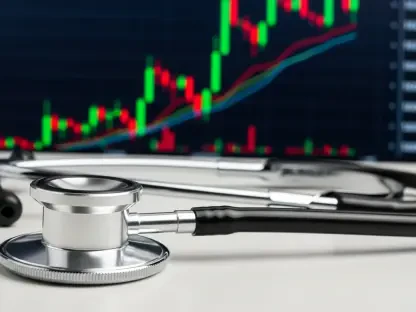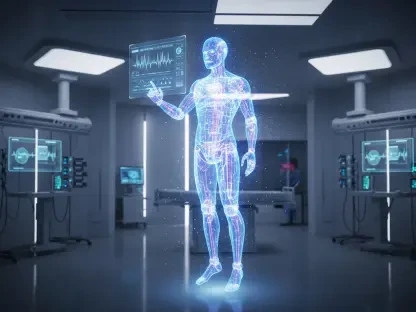Today, we’re speaking with Faisal Zain, a renowned healthcare expert whose deep knowledge of Work Health and Safety (WHS) laws and medical workplace advocacy offers invaluable insights for doctors navigating today’s challenging healthcare landscape. With a career dedicated to protecting medical professionals’ well-being and fostering systemic change, Faisal sheds light on how new WHS laws can transform workplace conditions, the pressures doctors face, and the importance of speaking up safely. Our conversation explores the implications of these laws, their impact on careers, and actionable steps for creating healthier medical environments.
How do the new Work Health and Safety laws reshape the responsibilities of doctors in their daily practice?
These new WHS laws are a game-changer for doctors because they establish a clear legal framework to ensure safer workplaces, both physically and mentally. Essentially, they mandate that employers, including medical institutions, must proactively address hazards like excessive workloads, bullying, and unsafe rostering. For doctors, this means not just expecting safety but having a legal backing to demand it. It also places a duty on everyone, especially those in leadership, to foster environments where risks are minimized, whether that’s through better staffing or tackling toxic behaviors. It’s about shifting from reacting to problems to preventing them.
What makes these laws different from the workplace safety regulations that existed before in healthcare?
Unlike older regulations that often focused narrowly on physical safety—like preventing slips or handling equipment—these new laws expand to cover psychosocial hazards. This includes stress from high job demands, lack of support, or hostility like bullying. They’re also more stringent, with explicit penalties for non-compliance, including personal liability for senior staff. Previously, many issues like burnout or disrespect were seen as cultural norms, not legal concerns. Now, they’re recognized as workplace injuries that must be managed, which is a significant shift in accountability.
How can these laws act as a shield for doctors against burnout and workplace abuse?
These laws provide a protective framework by making it a legal requirement for employers to address conditions that lead to burnout, such as unsafe workloads or hostile environments. For instance, if a doctor is consistently overworked due to understaffing, they can point to WHS obligations to demand better rostering. Similarly, the laws tackle abuse by mandating a culture of respect and offering mechanisms to report issues without fear of retaliation. This empowers doctors to prioritize their health without risking their careers, knowing there’s legal support behind them.
What are some of the career risks doctors might face if they don’t adhere to or engage with these new standards?
Ignoring these laws can be a serious misstep. For senior doctors, failing to address hazards or abuse in their teams could lead to personal fines, reputational damage, or even legal action like suspension of registration. For all doctors, not engaging with these standards might mean continuing to work in harmful conditions, risking mental or physical injury that could derail their careers. There’s also the danger of being seen as complicit in unsafe practices, which can impact professional standing. The stakes are high—non-compliance isn’t just a personal risk; it affects the whole team.
Can you share a scenario where unaddressed workplace hazards have significantly impacted a doctor’s professional journey?
Absolutely. Consider a junior doctor working in a chronically understaffed hospital department. They’re rostered for back-to-back shifts with no breaks, a clear hazard under WHS laws. Over months, the exhaustion leads to a clinical error—not because of incompetence, but sheer fatigue. This error triggers a complaint, damaging their confidence and record. If the hazard of unsafe rostering had been reported and addressed under WHS guidelines, this career setback could have been avoided. Instead, the doctor faces scrutiny while the systemic issue remains unaddressed.
What are the deeper effects of intense workplace pressures like heavy workloads and hostility on doctors’ health?
These pressures take a profound toll. Heavy workloads often mean doctors skip meals, sleep, or downtime, leading to physical exhaustion and conditions like hypertension or weakened immunity. Mentally, the constant stress fuels anxiety, depression, and burnout, especially when coupled with hostility or bullying. I’ve seen cases where doctors internalize disrespect as a norm, eroding their self-worth. Over time, this can drive them out of the profession entirely. It’s not just about surviving a tough day; it’s about the cumulative damage to their well-being.
Why do you think issues like disrespect and bullying have become so normalized in healthcare settings?
It’s a complex issue rooted in history and hierarchy. Healthcare has long operated under a high-stakes, high-pressure model where toughness is glorified, and vulnerability is seen as weakness. Senior staff sometimes perpetuate disrespect as a misguided way to ‘toughen up’ juniors or achieve clinical goals. Limited resources and time constraints exacerbate tensions, making abrasive behavior seem like a shortcut to efficiency. Plus, when bullying goes unchecked—often because perpetrators hold power—it becomes embedded in the culture, silencing those who might challenge it.
What barriers do doctors, especially trainees, face when trying to report abuse or unsafe working conditions?
The biggest barrier is fear of retaliation. Trainees often worry that speaking up will label them as troublemakers, risking their evaluations, references, or even job security. There’s also a pervasive belief that enduring hardship is just part of the job, so many hesitate to report what they think might be dismissed as minor. Lack of trust in the system plays a role too—stories of whistleblowers being ostracized or forced to resign deter others. For trainees, who are already vulnerable in hierarchical structures, the personal and professional cost of speaking out can feel insurmountable.
How can the medical community create a safer environment for doctors to voice concerns without fear of repercussions?
It starts with building a speak-up culture supported by robust systems. Anonymous reporting tools are crucial, allowing doctors to flag issues without exposing themselves to direct backlash. Leadership must also model accountability—when senior staff openly address hazards or abuse, it sets a tone of safety. Training on WHS rights and whistleblower protections can empower doctors with knowledge, while collective reporting, where groups raise issues together, reduces individual risk. Ultimately, institutions need to show that reports lead to real change, not just empty promises, to build trust.
What role do senior doctors play in fostering a respectful and supportive workplace under these new laws?
Senior doctors are pivotal as both role models and enforcers of change. Under the new WHS laws, they have a legal duty to ensure safe environments, which means actively combating bullying, ensuring fair workloads, and supporting junior staff. They can set the tone by demonstrating respect in their interactions and calling out toxic behavior, no matter who’s involved. By prioritizing a culture where speaking up is valued, not punished, they protect their teams and themselves from legal risks. Their influence can turn a dysfunctional workplace into a supportive one.
How can tools and resources like SafeDr help doctors navigate the complexities of WHS compliance and reporting?
Resources like SafeDr are invaluable because they simplify the often overwhelming world of WHS compliance. They provide accessible, practical guidance on recognizing hazards, understanding legal rights, and reporting issues safely. For many doctors, the complexity of regulations and fear of missteps are major barriers. SafeDr puts that knowledge at their fingertips, offering step-by-step support for prevention and protection. It’s like having a roadmap to navigate workplace challenges without feeling lost or exposed, ultimately fostering safer care for everyone.
Looking ahead, what is your forecast for the future of workplace safety and well-being in the medical profession?
I’m cautiously optimistic. These new WHS laws are a turning point, pushing the medical profession toward accountability and prevention rather than just reaction. I foresee a gradual cultural shift where respect and well-being become non-negotiable, driven by legal mandates and growing advocacy for better resourcing. However, the pace of change depends on leadership buy-in and whether doctors collectively embrace tools like SafeDr to speak up. If we sustain this momentum, we could see a healthier workforce in the next decade, but it’ll require persistent effort to overcome entrenched norms.









